“At its most basic, cooking is the transfer of energy from a heat source to your food.” from the wonderful resource Serious Eats
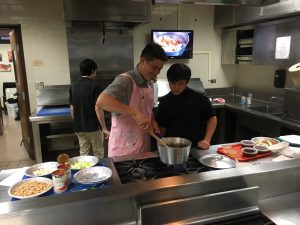
yes, we ARE having fun!
My friends and my family know that I spend way too much of my expendable income on dining experiences – not casual affairs, but going to interesting places and trying out new chefs in town when I can afford them. I also love cooking and my own kitchen, constantly playing with new recipes or adapting old ones.
**By the way – if you haven’t been to Scratch in downtown Honolulu, put it on your must do list.**
It’s no big surprise then, that I’ve always had it in my mind to figure out how to bring cooking into my students’ experiences. At so many levels this is such a important experience – research shows that families that cook and eat together have deeper relationships, healthier diets and also save money at the same time. Were living in a society in which “prepackaged” and “to go” are the main means that many of our students understand eating, and yet for most of society’s history food and cooking has been at the center of culture, interaction, and identity.
Moreover, the science of cooking is deep and powerful and cuts across many disciplines – physics, biology, health and nutrition, chemistry, sustainable science, environmental impact… the list goes on. So how do we make this happen in our classrooms? How far can we go with this to both engage our students and still have a safe learning environment?
We have been blessed over the last four years to work with a wonderful community partner: the Culinary Arts program at Kapiolani Community College (KCC). We have coordinated projects with them dealing with sustainable agriculture, food to table and cooking classes – but in the past these were focused on life sciences as our primary core standards. Our wonderful friend and colleague Daniel Leung from KCC helped us to design a project this semester that centers on cooking and thermodynamics. The underlying science of this includes heat and temperature, radiation, convection and conduction, and the first and second law of thermodynamics. Additionally, there is a wealth of information about the chemical phenomenon that happens around the process of cooking food including the way that plant and animal cells behave differently, how proteins work at different temperatures, and even the important Maillard reaction.
We mapped out a set of experiments and activities, readings and hands-on work that would allow our students to investigate this deeply and tied to our energy standards in our physical science curriculum. Over the four weeks of this project, our students will visit the KCC kitchen classroom/lab to prepare both Tuscan bean soup and a dish to be still decided – but something that involves braising and the three different types of heat transfer. In class we are doing things as simple as looking at the effect of different metals in the way they transfer heat, to the way that cooling happens, through looking at the heat capacity of different materials including food. In the end, two of the outcomes will be our students cooking a meal for their family and explaining the science behind it and the creation of a five-minute video in which they explain the science behind a particular cooking technique – modeled after the widely known show “Good Eats” with Alton Brown.
As usual, I’ve been posting pictures of our work on our Flickr site here
This first four-week unit we designed is the starting point for us expanding on this idea next year to create a deeper look at food, science and culture. We are excited to see where this will take us but we know it’ll be fun and powerful!
Here’s to good food, good science, and powerful learning! Cheers!
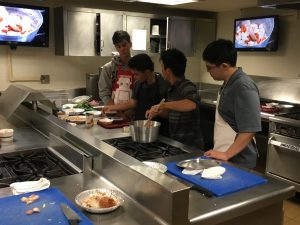
cooking the soup
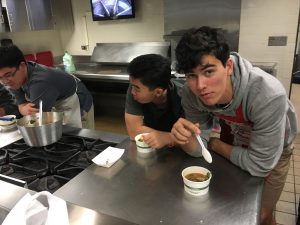
Tasting our final product: Tuscan Bean Soup
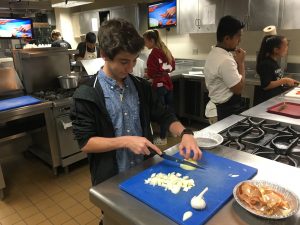
We received training on prep use of knives as well!
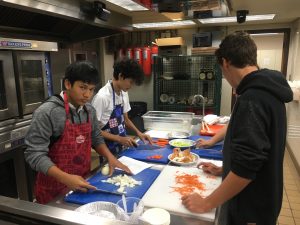
Prepping the vegetables at KCC
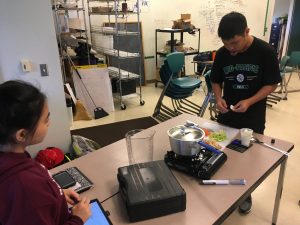
Cooking away in our classroom
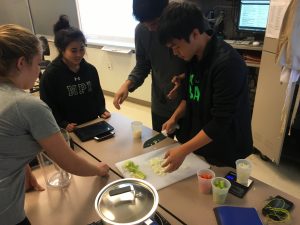
Working in Our classroom lab with cooking meat and vegetables
